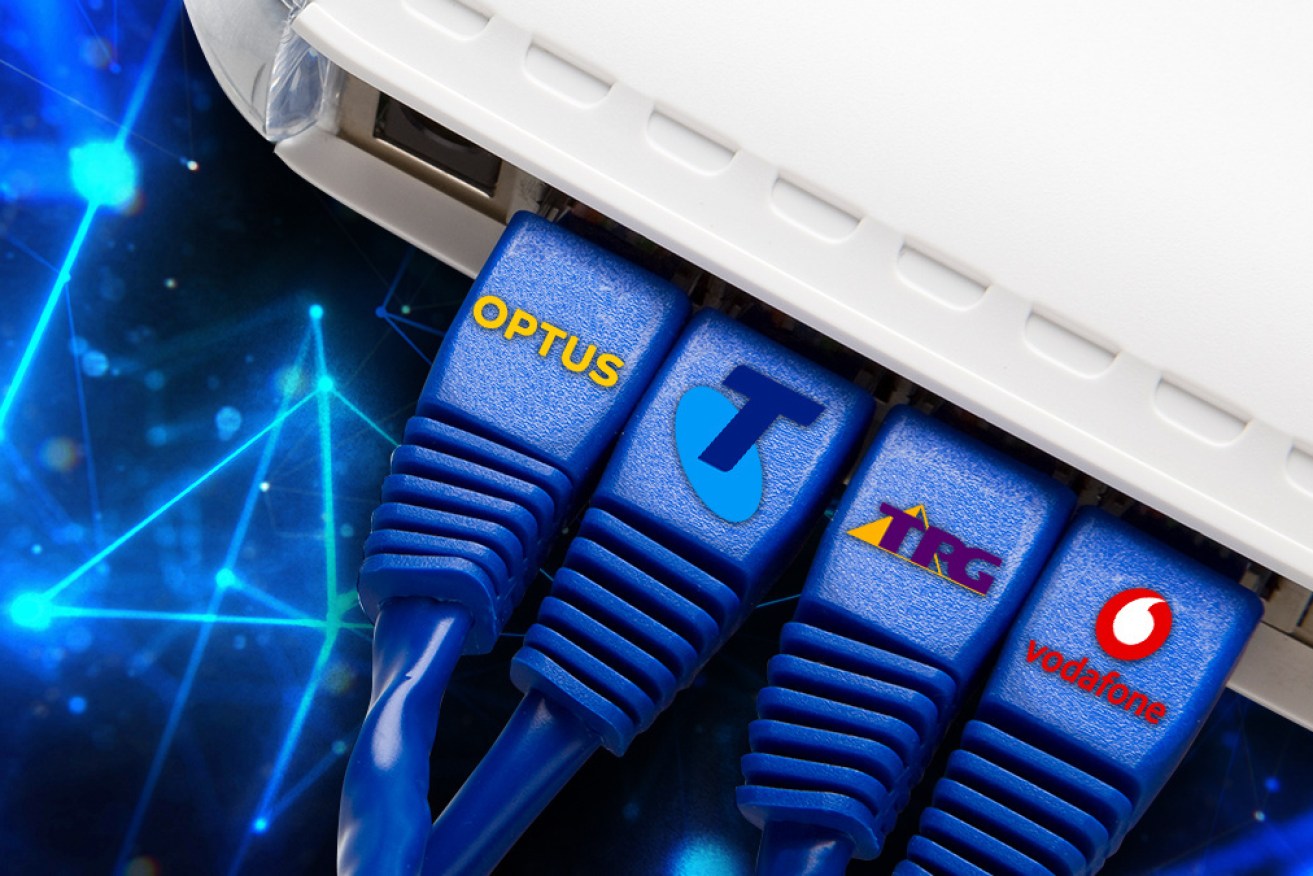Choosing an NBN plan? Smaller internet providers are challenging big telcos on speeds, ACCC says


The big telcos dominate the market, but some smaller ISPs are performing just as well. Photo: Getty
Australia’s internet providers have logged their best NBN speed performance ever – and consumers are the winner, as the quality gap between small, cheaper telcos and premium brands narrows.
In February, ISPs delivered between 86.8 and 99.1 per cent of advertised NBN25, NBN50, and NBN100 plan speeds during the busy evening hours of 7pm to 11pm, said the ACCC’s latest quarterly Measuring Broadband Australia (MBA) report, released on Thursday.
Simultaneously, reporting from the consumer watchdog shows performance gap between smaller and larger internet service providers (ISPs) is narrowing.
February’s results represent the best performance by providers since the reporting program began in 2018.
Optus was the top performer during busy hours, delivering 99.1 per cent of maximum plan speeds, but it was closely followed by small Australian player Exetel.
Exetel was the most-improved performer since the previous report in December, delivering 98.7 per cent of plan speeds during the busy hours.
The nation’s biggest telco, Telstra, was in third place on 97.6 per cent, followed by TPG on 96.8 per cent and Aussie Broadband on 96 per cent.

Source: ACCC Measuring Broadband Australia
“These results suggest that a broader range of retailers, not just those that directly connect to the NBN, are able to achieve close to full plan speeds, which is good news for consumers and competition,” the Australian Competition and Consumer Commission’s Anna Brakey said.
“This points to a further maturing of the broadband market.”
Overall, the MBA results showed that “NBN is performing well and retail service providers are largely delivering what consumers expect and have paid for”, Ms Brakey said.
Picking the right NBN plan
There are currently six NBN speed tiers available depending on your connection type, but most households will choose between the three major plans: NBN25, NBN50 and NBN100.
The standard NBN50 plan is currently the most popular choice, delivering maximum download speeds of 50 Mbps.
Households with very high speed plans such as NBN250 and ‘Home Ultrafast’ available to them should ‘weigh up’ whether upgrading is worth the extra cost, the ACCC said.
“We encourage consumers who are weighing up whether to upgrade to a very high speed tier to consider the value of these services relative to their normal daily usage,” Ms Brakey said.
“Most Australians have 50 Mbps speed plans which are capable of meeting the needs of a typical household, even when multiple devices are online at the same time.”
How many Netflix videos can I stream at once?
In good news for large households, all major NBN plans can now “theoretically” support up to four simultaneous High Definition (HD) streams during ‘busy hours’ from 7pm to 11pm, the ACCC found.
When it comes to Ultra High Definition (UHD) streaming, nearly three-quarters of NBN25 plans surveyed were able to support two simultaneous UHD Netflix videos during busy hours, while almost all NBN50 plans supported three, with 68 per cent supporting four.
More than 90 per cent of NBN100 plans allowed up to five Netflix videos to be streamed in UHD simultaneously during busy hours.
Home Ultrafast ‘bottleneck’ problem
The ACCC found some NBN users with very high speed ‘Home Ultrafast’ plans weren’t getting anywhere near to peak speeds, and that problems with their home setup was likely to blame.
In February, those on Home Ultrafast NBN plans experienced average speeds between 608 and 745 Mbps.
But some of those monitored by the ACCC only ever achieved speeds below 100Mbps.
The ACCC found that ‘constrained gateway devices’ were likely to blame.
“We have assessed that most of these volunteers have a 100Mbps Ethernet link within their home that is the bottleneck,” the ACCC report said.
“A common cause of this is a Customer Premises Equipment (CPE) or other networking equipment that has 100Mbps ports. These consumers are unable to receive the full benefit of their very high speed plans.”








